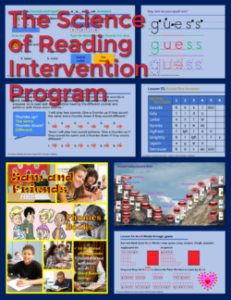FREE Diagnostic Reading and ELA Assessments
Following are accurate and teachable reading and English-language arts assessments and corresponding recording matrices to help teachers determine what students know and what they do not know. The assessments are designed for grades 4-adult students. Each comprehensive assessment produce teachable data. The author’s companion instructional resources correspond to each assessment item. Visit the Pennington Publishing store to check out extensive program resources.
Phonemic Awareness Assessments
Use these five phonemic awareness to determine reading readiness. Each of the 5 assessments is administered whole class and includes audio files.
Print and 5:48 Audio File
Print and 5:38 Audio File
Print and 5:54 Audio File
Print and 5:53 Audio File
Phonemic Segmenting Assessment
Print and 5:21 Audio File
Alphabetic Awareness Assessments
Print and Alphabet Cards
Phonics Assessments
The phonics assessments feature nonsense words and test all common sound-spellings.
Vowel Sounds Phonics Assessment
Print, Google Forms, Google Sheets and 10:42 Audio File
Consonant Sounds Phonics Assessment
Print, Google Forms, Google Sheets and 12:07 Audio File
Fluency Assessment
The fluency assessment is designed in a tiered reading level format, beginning at the first grade level and proceeding to the seventh grade level. This assessment is individually administered and is timed for two minutes.
Heart Words Assessments
This 108-word assessment tests student knowledge of high frequency words with an irregular sound-spelling (the part to learn by heart). As an option, teachers may require students to identify the irregular sound spellings by drawing hearts.
Spelling Assessments
All common spelling patterns are included in this assessment. Administer part or all of the Diagnostic Spelling Assessment (American English Version) test items, according to grade-level criteria.
- Grade 2: K-1 spelling patterns (#s 1‒41)
- Grade 3: K-3 spelling patterns (#s 1‒55)
- Grade 4: K-3 spelling patterns (#s 1‒64)
- Grade 5: K-4 spelling patterns (#s 1‒82)
- Grade 6: K-5 spelling patterns (#s 1‒100)
- Grade 7: K-6 spelling patterns(#s 1‒102)
All common spelling patterns are included in this assessment. Administer part or all of the Diagnostic Spelling Assessment (Canadian English Version) test items, according to grade-level criteria
- Grade 2: K-1 spelling patterns (#s 1‒41)
- Grade 3: K-3 spelling patterns (#s 1‒55)
- Grade 4: K-3 spelling patterns (#s 1‒64)
- Grade 5: K-4 spelling patterns (#s 1‒82)
- Grade 6: K-5 spelling patterns (#s 1‒100)
- Grade 7: K-6 spelling patterns(#s 1‒102)
- Grade 8: K-7 spelling patterns (#s 1‒106)
Print, American English “Normal speed” 22:38 and “Quick version 17:26 audio files, Google Sheets
Print, Canadian English “Normal speed” 21:12 and “Quick version 18:53 audio files, Google Sheets
Grammar, Usage, and Mechanics Assessments
Use this 45 grammar and usage item assessment to determine student’s knowledge of parts of speech, subjects and predicates, types of sentences, fragments and run-ons, pronoun usage, modifiers, verb tenses and verb forms.
Print and Google Forms
Use this 32 item mechanics assessment to test students’ ability to apply correct usage of commas, capitalization, and all other essential punctuation.
As an option, the grammar, usage, and mechanics assessments are combined as a Google form.
Print and Google Forms
Diagnostic Grammar, Usage, and Mechanics Assessment (self-correcting Google forms)
Vocabulary Assessments
The Tier 2 academic language vocabulary has been derived from the research-based Academic Word List (AWL). The Academic Word List (Coxhead) has been ordered into grade level lists by frequency of use. Each grades 4, 5, 6, 7, and 8 Academic Language Assessment includes 56 Tier 2 words. The Tier 2 words are the academic language words that are most-often generalizable across the academic domains. For example, the word analyze is used in English-language arts, social science, history, science, math, and the arts.
Grade 4 Academic Language Assessment
Grade 5 Academic Language Assessment
Grade 6 Academic Language Assessment
Grade 7 Academic Language Assessment
Grade 8 Academic Language Assessment
Diagnostic Assessment Matrices
*****

The Science of Reading Intervention Program for Grades 4-Adults
 Yes, these assessments are free: Phonemic Awareness, Vowel Sounds Phonics, Consonant Sound Phonics, Heart Words, Rimes, Spelling, Fluency. All but the fluency assessment are designed for whole class administration for students ages 8-adult.
Yes, these assessments are free: Phonemic Awareness, Vowel Sounds Phonics, Consonant Sound Phonics, Heart Words, Rimes, Spelling, Fluency. All but the fluency assessment are designed for whole class administration for students ages 8-adult. 